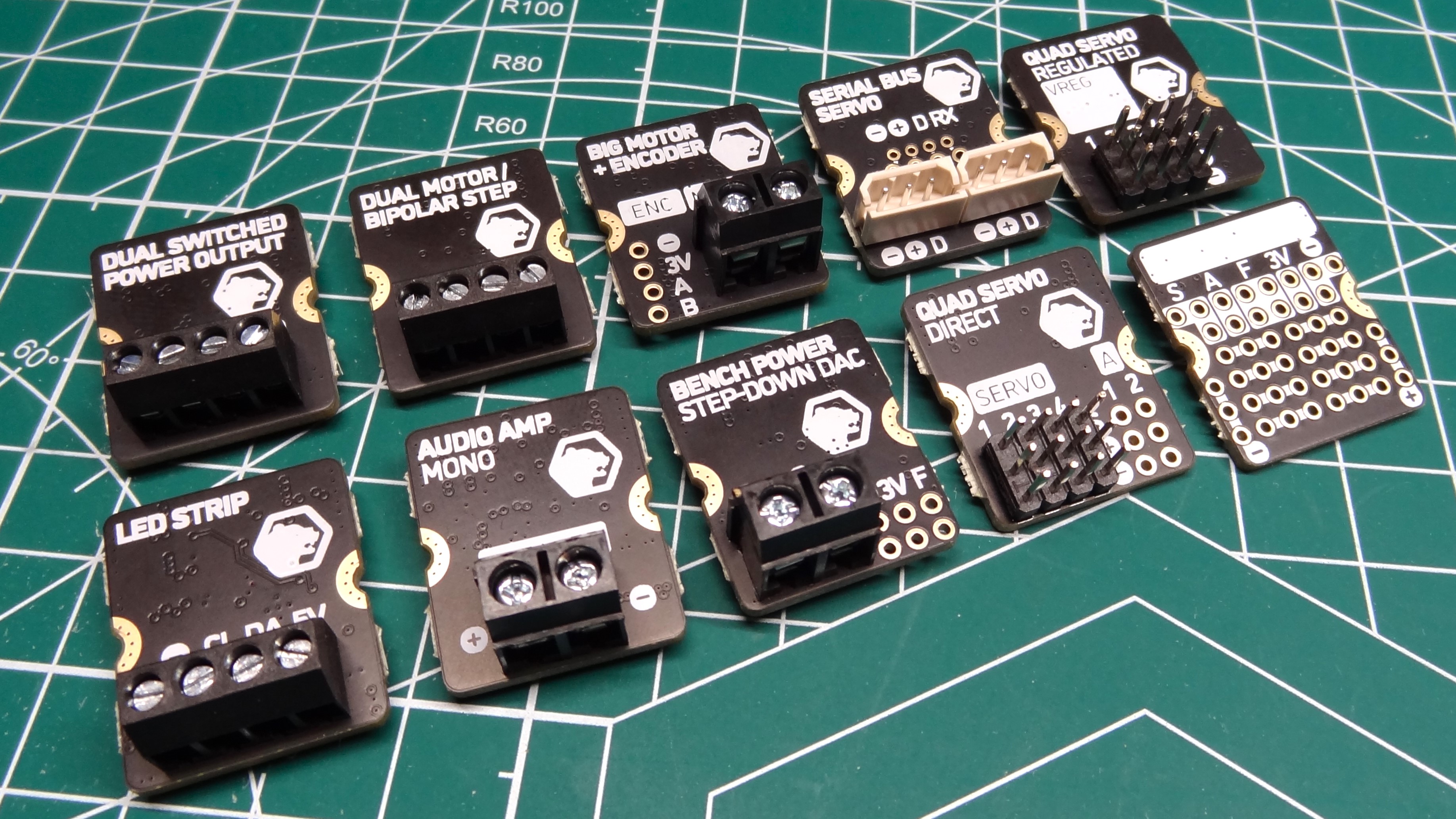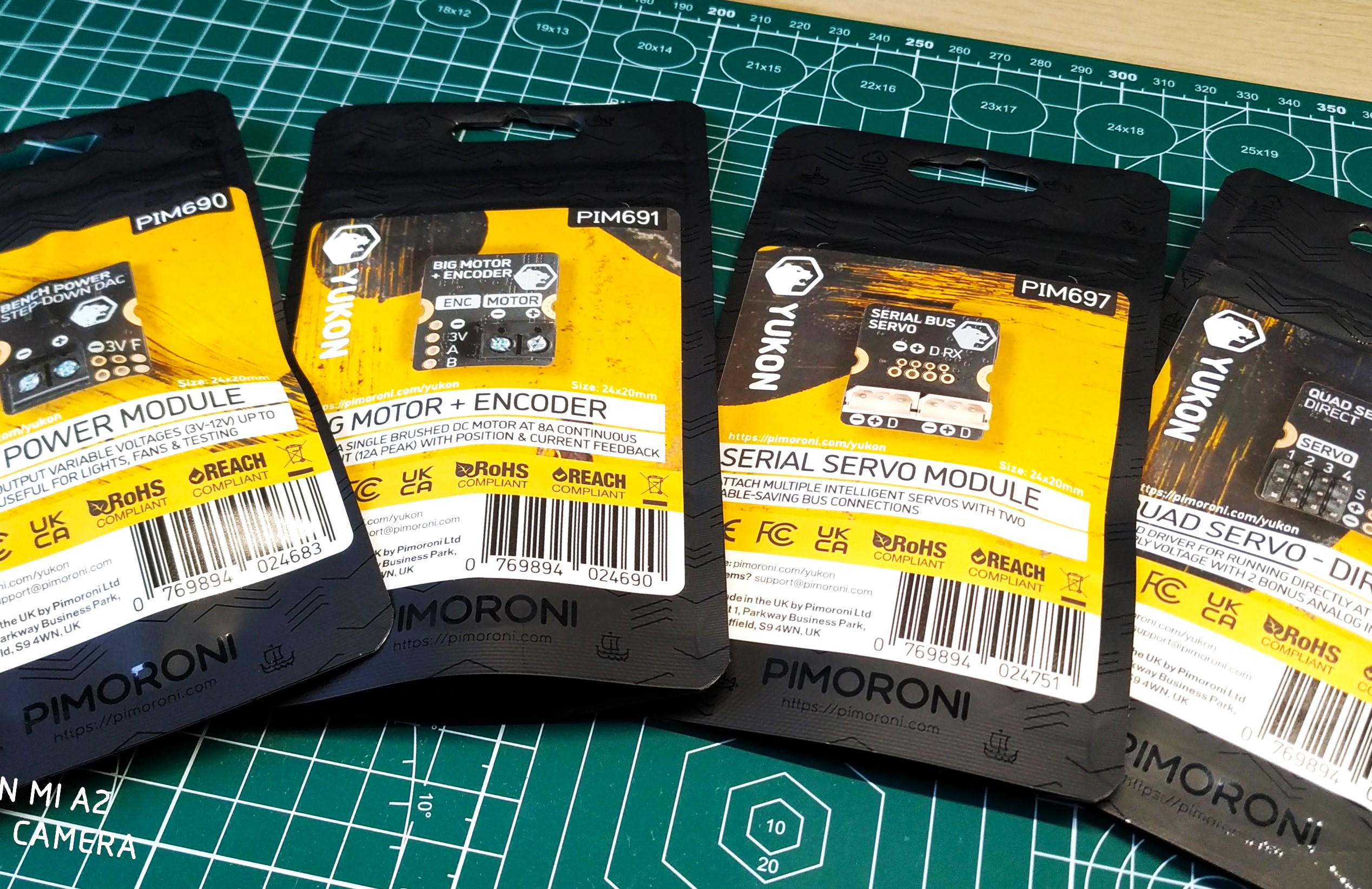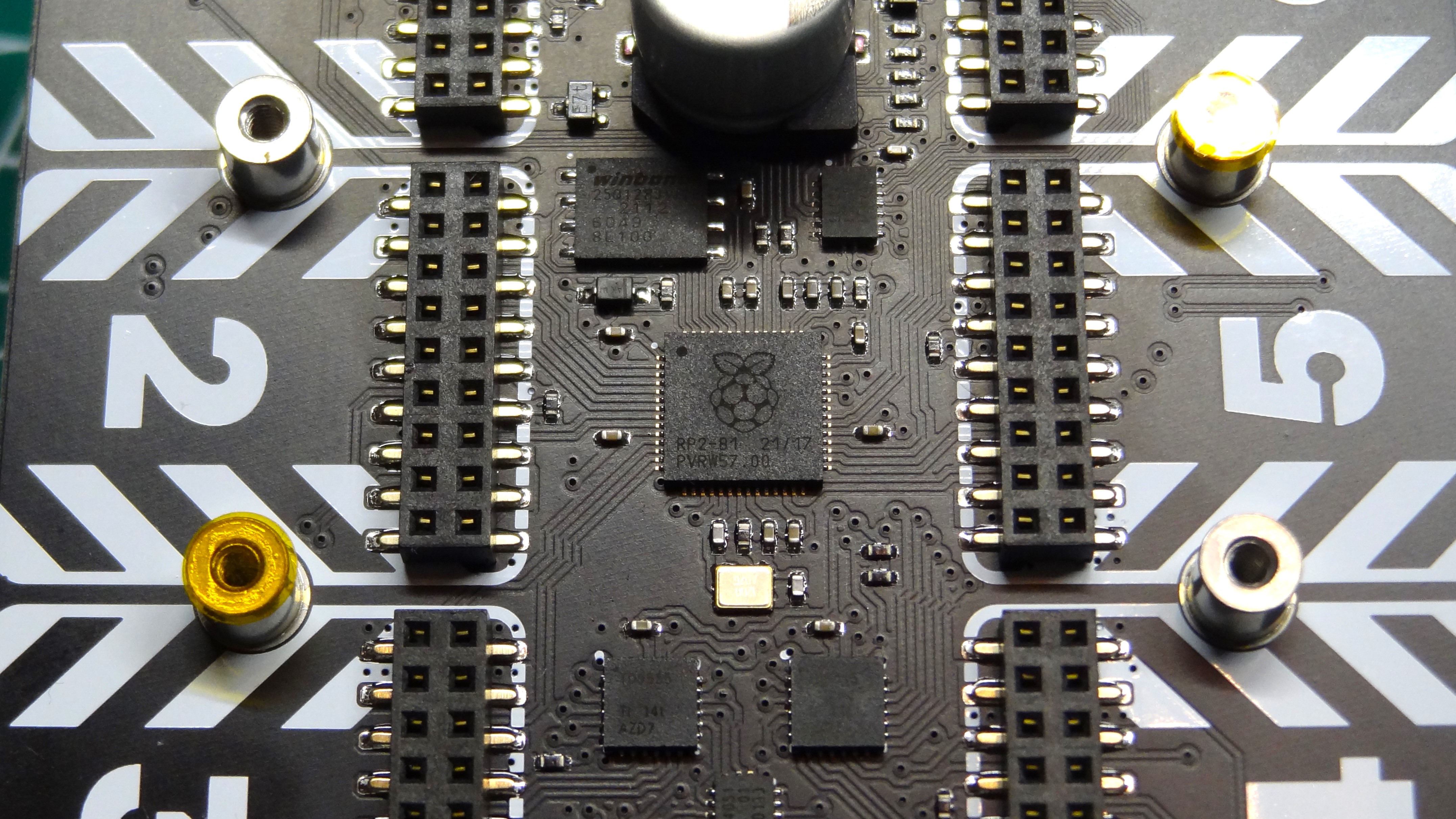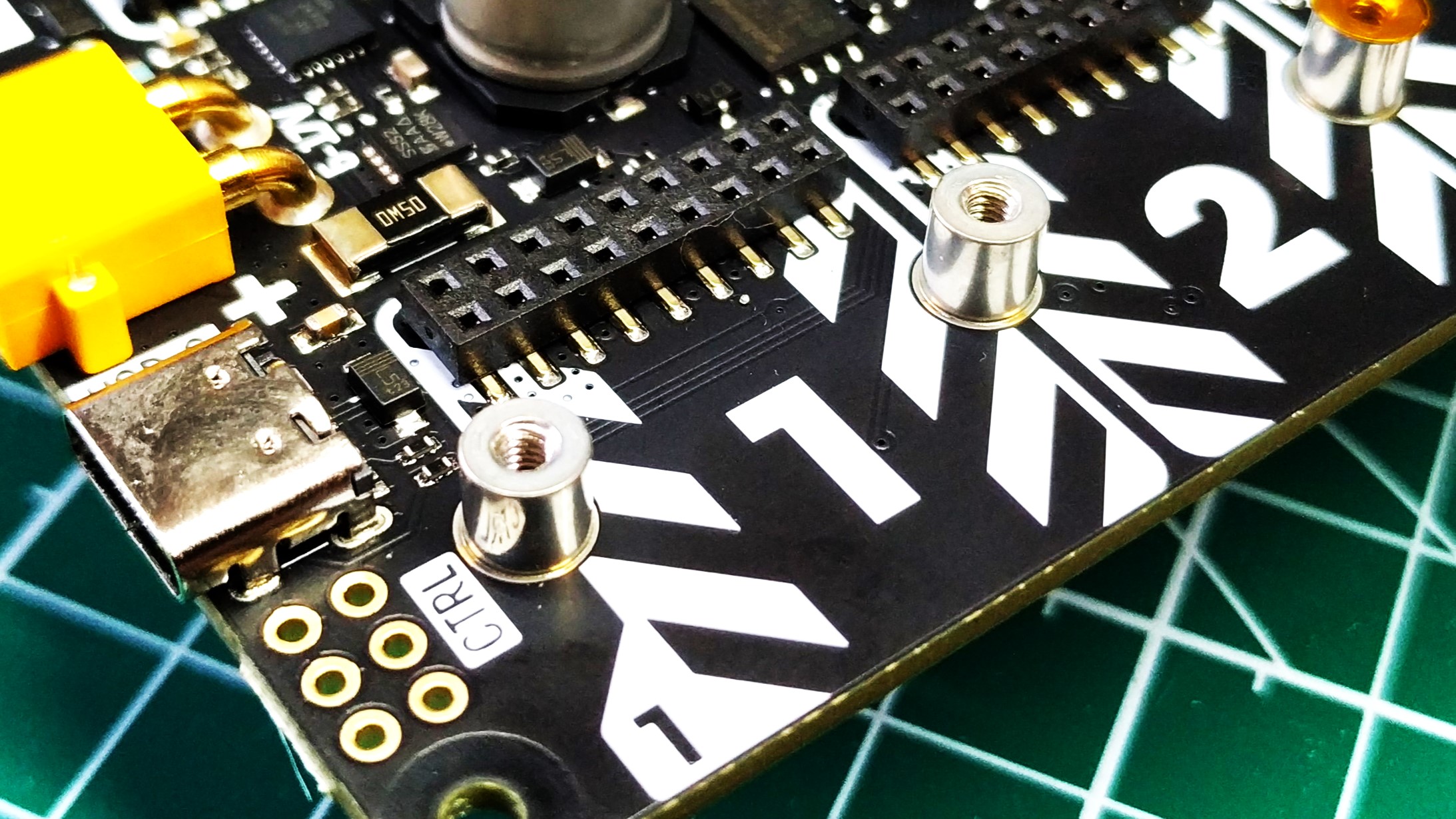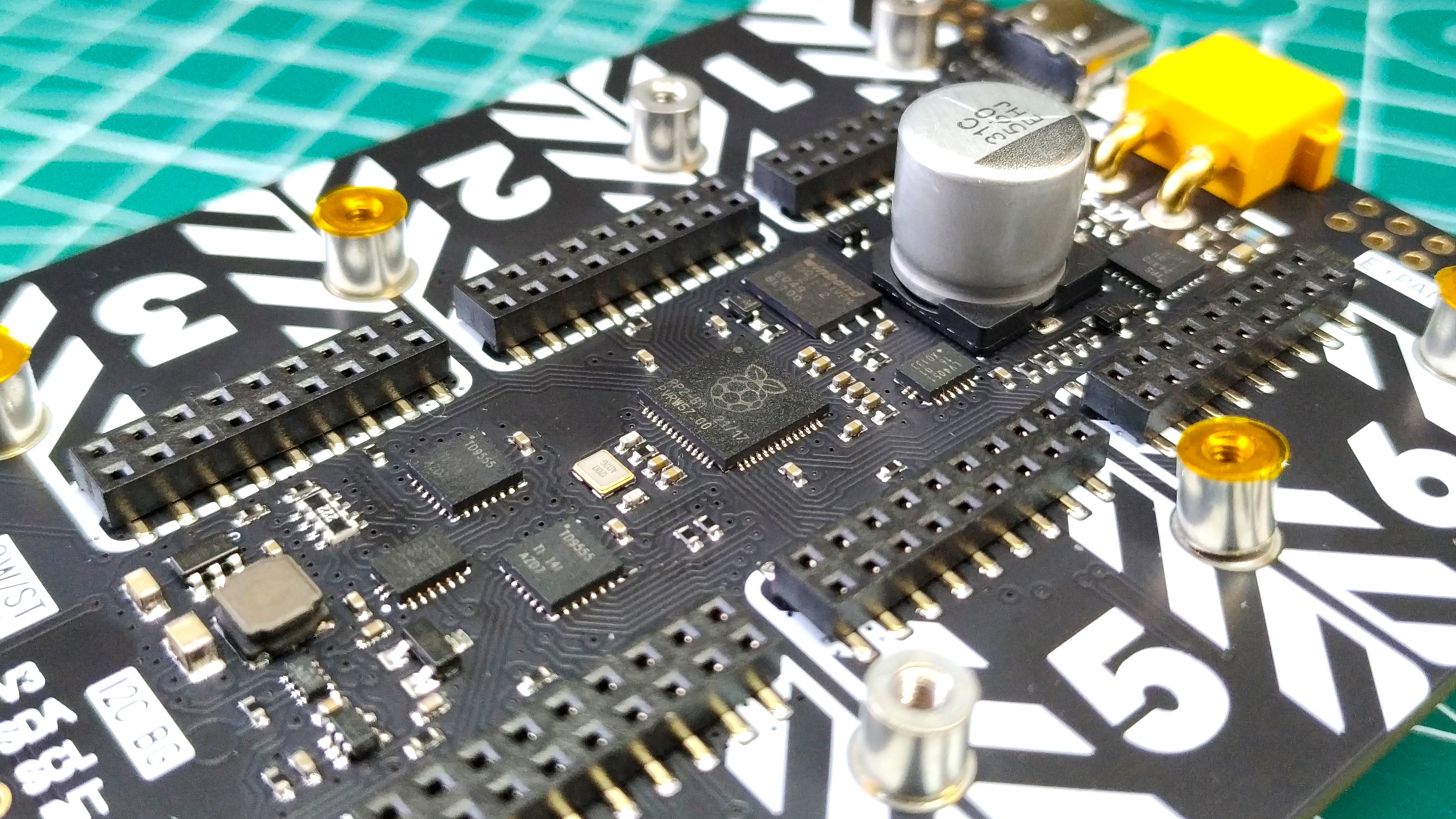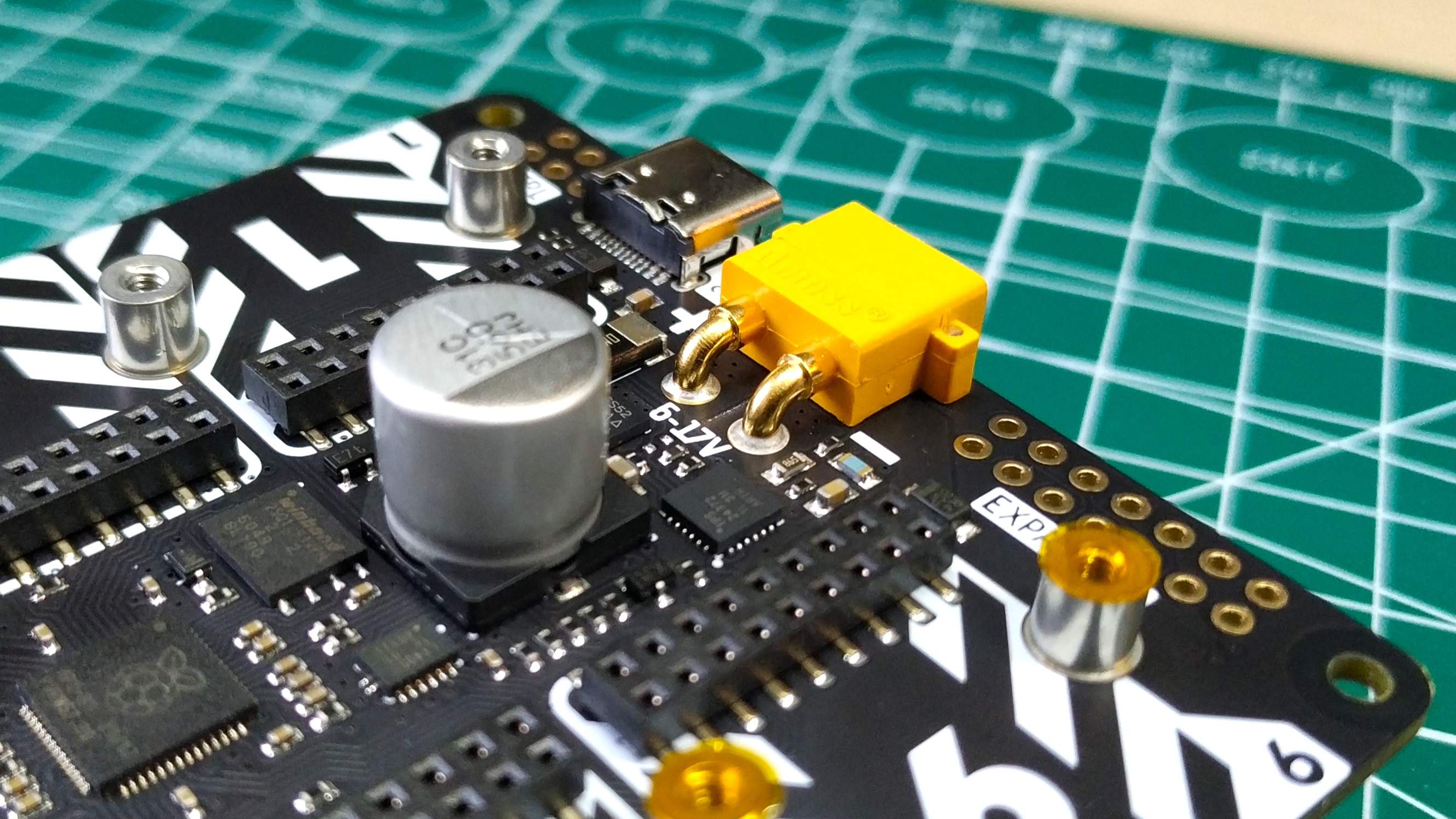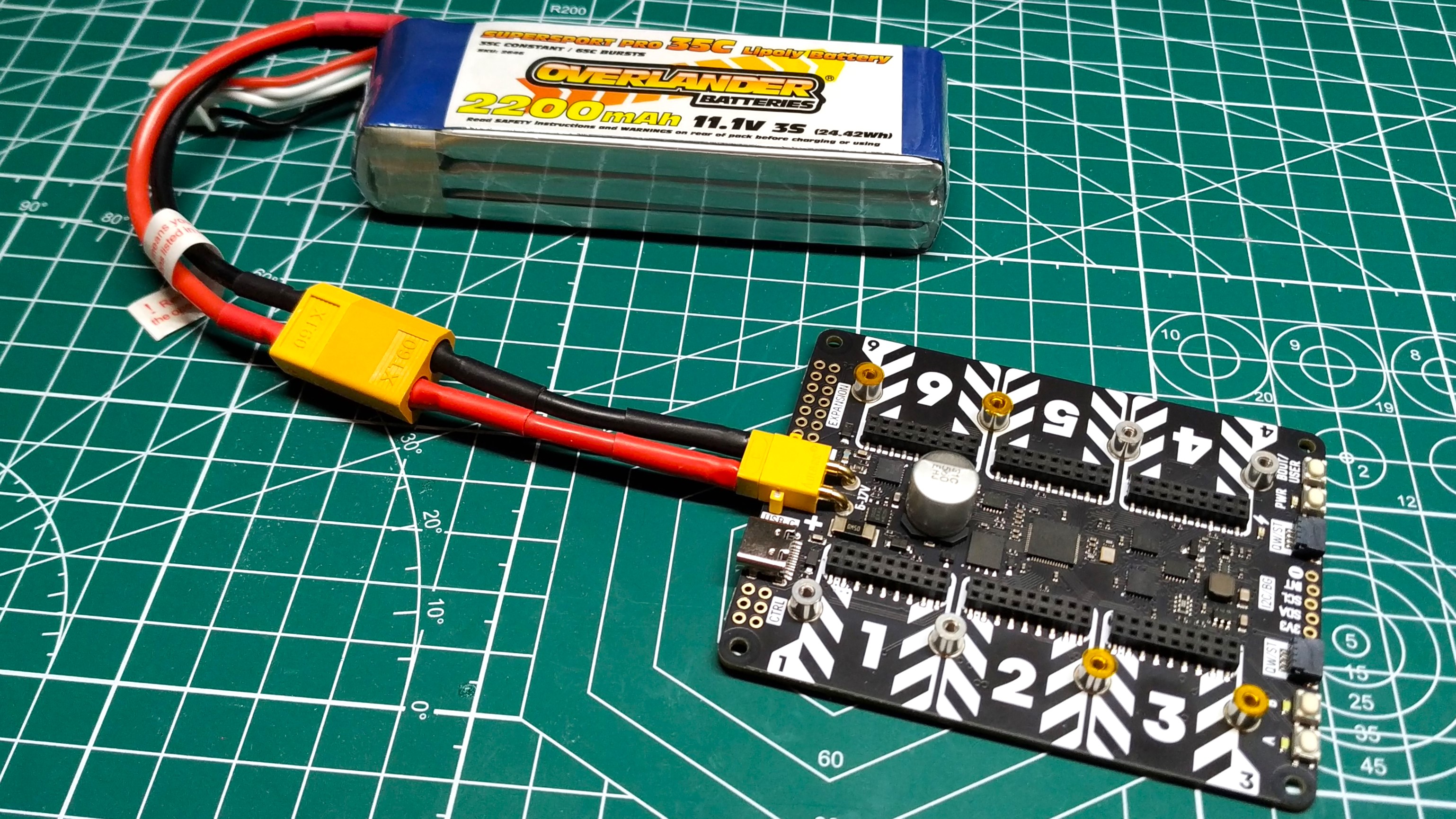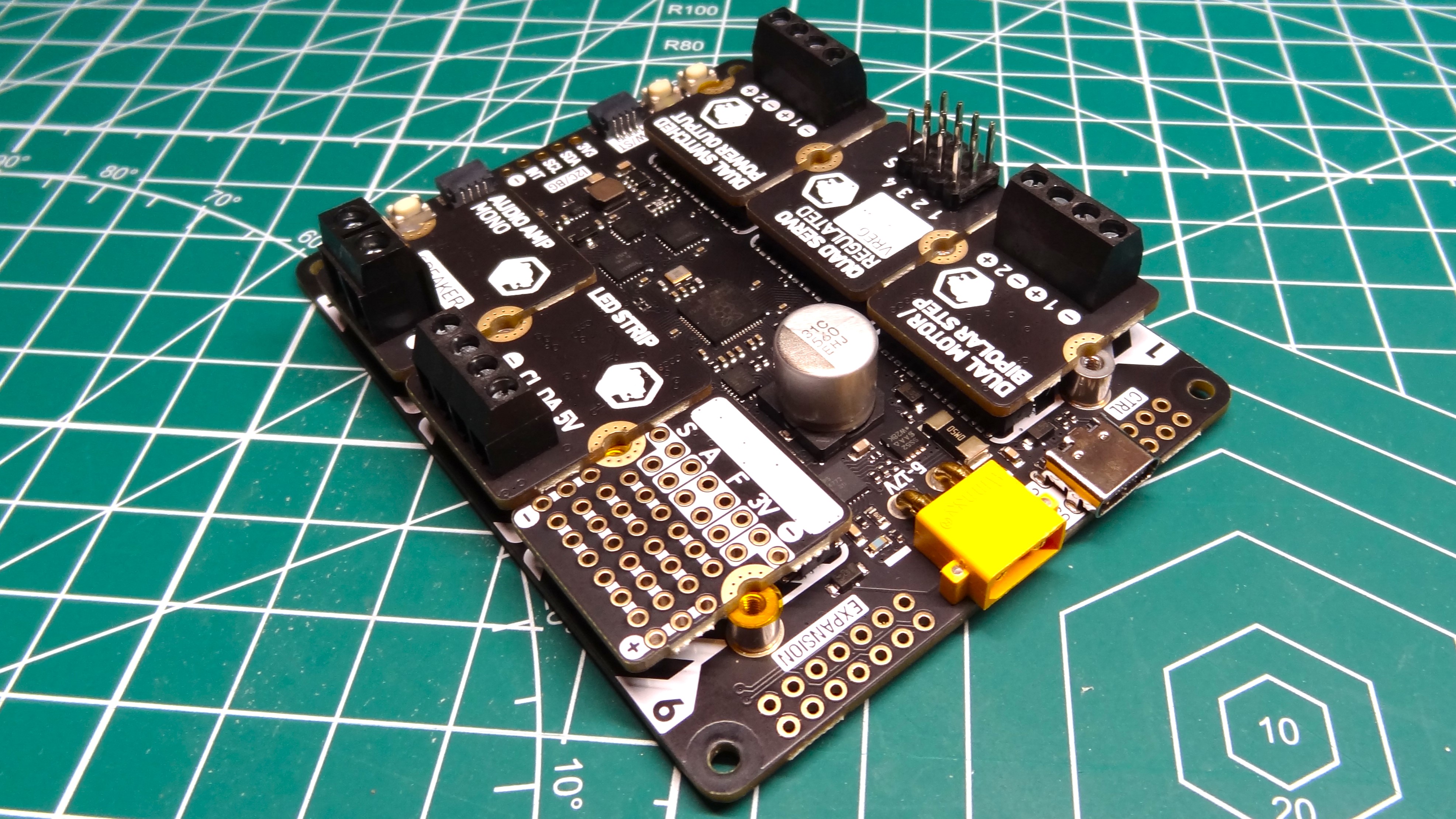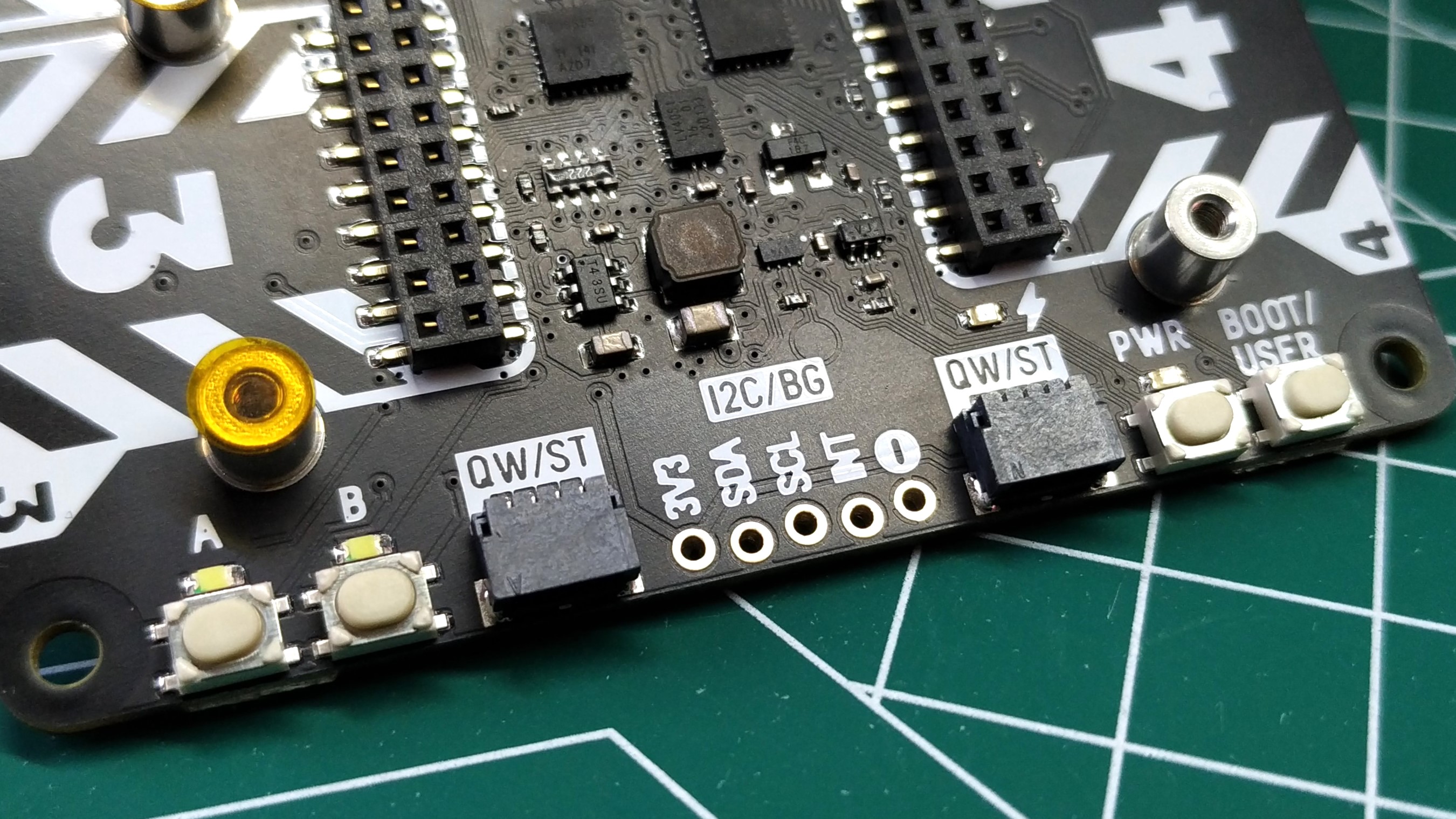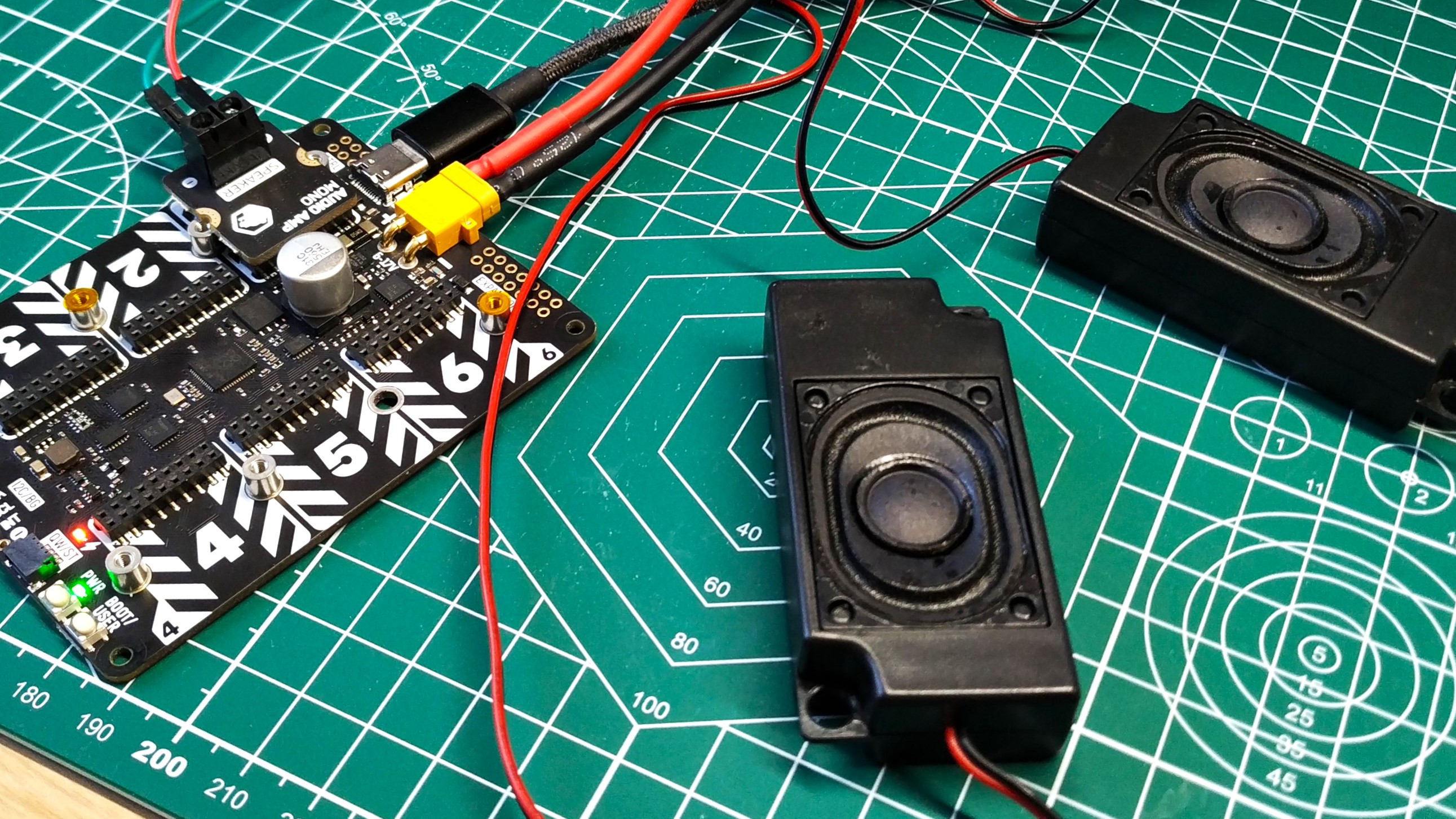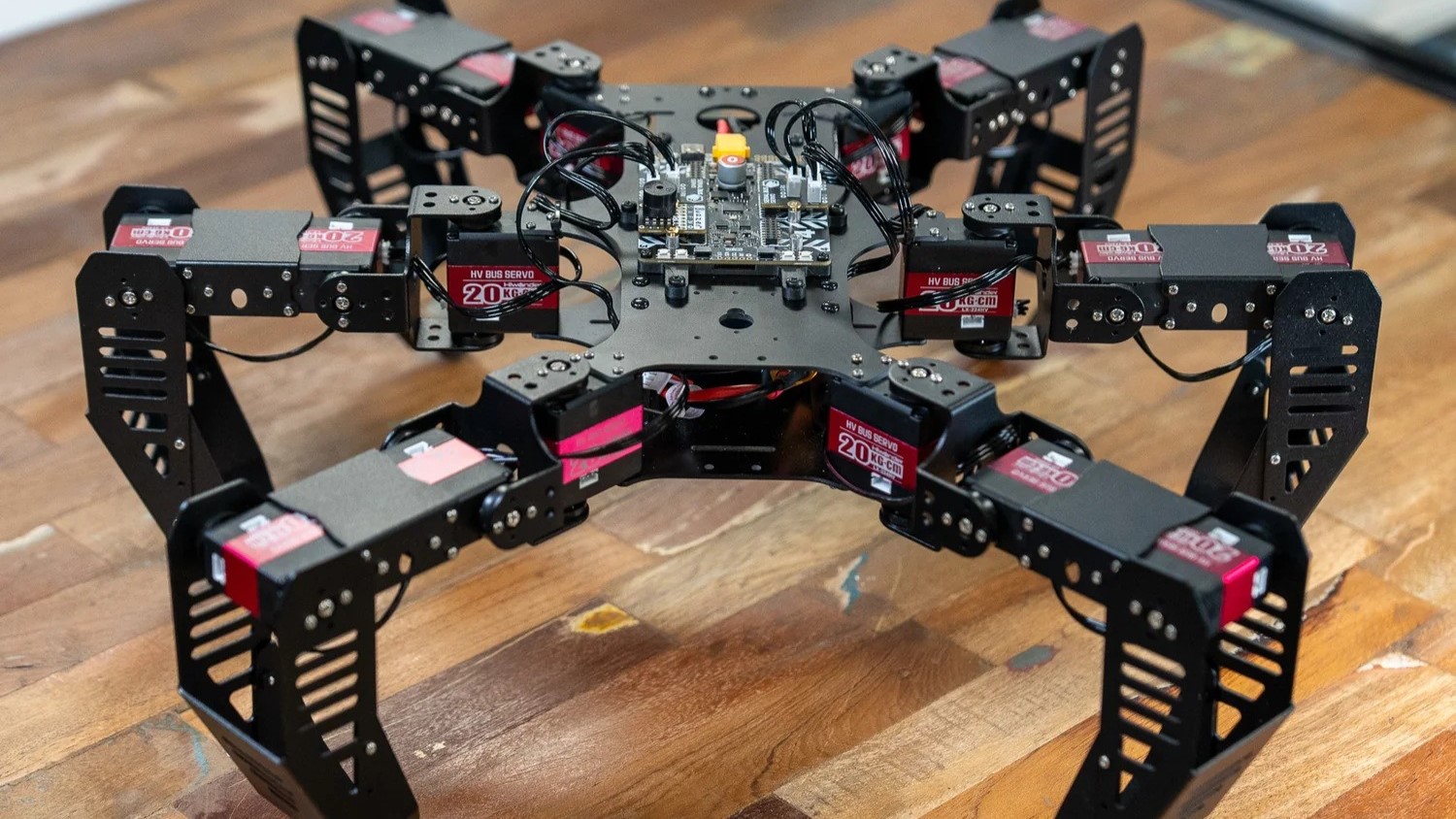Tom's Hardware Verdict
A superb introduction to advanced robotics and prop design based on the Raspberry Pi Pico’s RP2040.
Pros
- +
Excellent hardware
- +
Ease of use
- +
Modules enable bespoke creations
- +
Designed with awareness
- +
Flexible power options
- +
MicroPython library is abstracted
- +
Lots of project code examples to learn from
Cons
- -
Advanced users will get the most from it
Why you can trust Tom's Hardware
Pimoroni’s latest RP2040 based board is a labor of love for its creator Dr Chris Parrott. Parrott loves robotics, and when he isn’t working on them for Pimoroni, he is tinkering away on a creation of his own.
Retailing for $24 (or $90 for the kit), Yukon is a high power modular robotics and engineering platform with the RP2040 at its heart.Yes, the same RP2040 that powers the Raspberry Pi Pico W. Yukon has Parrott’s fingerprints all over it and we were lucky enough to see it in action way back in July 2023.
At Liverpool Make Fest we bumped into Parrott and Yukon alpha tester’s Brian Corteil and Paul Fretwell. We saw first hand how this platform could be used to build robots and mechanized projects. We even experienced Parrott’s enthusiasm for the project. A delightful conversation ensued.
Is the Pimoroni Yukon for you? Can we build projects both great and small? The only way to learn this is to put it on the bench!
Pimoroni Yukon Specifications
| SoC | RP2040 Arm Cortex M0+ Dual Core at 133 MHz |
| RAM | 264KB SRAM |
| Storage | 16MB Flash |
| Connectivity | 6 x high power slots 2 x Qw/ST StemmaQT connectors 1 x Breakout Garden header (unsoldered) Expansion header (unsoldered) |
| Buttons | 3 x User buttons (A, B and USER) Power button |
| Power | XT30 5 to 17V, 15A continuous current E-fuse protection Under / Overvoltage, current and temperature sensing |
| Data | USB C |
| Dimensions | 84 x 67 x 14mm (L x W x H) |
| Price | $24 (board only) $90 Kit |
We received the “Yukon Make Anything!” kit, which retails for around $90 and contains a few extras.
- Dual Motor / Bipolar Stepper Module
- Quad Servo [Regulated] Module
- LED Strip Module
- Audio Amp Module
- Dual Switched Power Output Module
- Proto Module
- USB-A to USB-C cable for programming
- Loose wire to XT30 cable for power
- XT60 to XT30 cable for power
The kit is pricey, but the bundled modules retail for $61, so add that to the $24 for the host board and we are paying $6 more for the additional data and power cables (bundle price is around $10) so we save a little cash and we get a snazzy plastic box to store the parts.
Additional modules can be bought from Pimoroni, we received a selection of extras in sealed “coffee bag” retail packaging.
Get Tom's Hardware's best news and in-depth reviews, straight to your inbox.
Yukon Design
Yukon has a unique design. The RP2040 is in the center of the board, and it is flanked by six slots (which look like landing bays or garages) for our choice of modules. The board design has been carefully considered.
There are mounting points to secure the board to your project, even the modules have a means to secure them for rough terrain. The board is large enough to make connections without being fiddly, yet it isn’t too big. It has clearly been designed to meet the needs of robotics hobbyists.
Let's address the elephant in the room. No, Yukon does not have Wi-Fi or Bluetooth. There is scope to add this. But you will need to wire up your own solution. Parrott has successfully wired up a Bluetooth module for remote control. In the past we have added Wi-Fi to the original Raspberry Pi Pico via SPI and an Adafruit Airlift Mini.
Pimoroni Yukon Power Options
You’d think that plugging in the USB C cable would provide power and data for Yukon. Well it doesn’t and we need to understand why before we move on. Yukon is designed to be the center of a powerful project. The onboard USB-C connector is not Power Delivery enabled, it is just there to program the RP2040. Initially this confused us. Surely there was enough juice to power the LEDs? In theory, yes, but Parrott has cleverly chosen to include an XT30 power connector, commonly seen in the RC world along with the larger XT60. The external power supplied via the XT30 is what powers our projects and as Yukon is designed for larger, more advanced projects, the decision is valid. USB C PD can supply high-wattage, but in the robotics and RC world, the XT series of connectors is the king.
Power via the XT30 connector can range from 5 to 17V at 15 Amps of continuous current. That is pretty beefy for a small board. If you get the voltage wrong and end up sending more than 17V then the e-Fuse will protect your project from an early entry into Silicon Heaven. The e-Fuse has a 40A and 18V overcurrent protection.
We powered our review unit via a bench power supply, which also gave us a controlled manner to test the power circuit for overvoltage protection. Before the e-Fuse kicked in we hit two software based warnings. The first is overvoltage protection, which switches off the output once we go over its limit. The second is undervoltage, which helpfully reminds us to connect power to the XT30, and to ensure it is on. To detect the voltage, Yukon has internal voltage in, out and current sensors.
Once we solved the power requirements, our projects sprang into life. But, how can we make them portable? For that we needed to look to the RC world for an XT60 based 3S lipo battery with 2200 mAh capacity at 11.1V.
Charging these batteries requires a specialist kit, Yukon cannot do this on its own. We used a VSR Mini 60W 6A charger designed for just this task. After charging the battery we were good to go and our projects became portable. How long your particular project will run on battery will depend on the number of modules, motors, LEDs and audio requirements.
Making Connections
There are six slots on Yukon and these slots each contain a 0.1 inch connector. Yukon specific modules connect to the slot and are held in place using M2 screws to mounting posts. Why is this needed? Building a robot with this much power, things are going to rattle loose. Screw them down or lose them as your robot goes off-road.
The connections all contain “high power” pins, designed for use with components which need additional power. For “low power” connections we have two StemmaQT and a single Breakout Garden connector. With these connectors we can use many of the best StemmaQT add on boards.
There are four buttons on the board, A, B and User can be used in your projects. Power is self explanatory, and the User button pulls double-duty as Boot, used to put the board into a bootloader mode for firmware updates.
Programming Pimoroni Yukon
As ever, Pimoroni offers its own flavor of MicroPython, fully-stocked with libraries to use the many different modules. We connected up our review unit and flashed the latest MicroPython firmware with all the extra modules. For a Raspberry Pi Pico based device, this is a large download (32MB) but it provides everything we need to get started. If you prefer to build your own, there is a smaller firmware image which weighs in at 1.1MB. But, you’ll need to add the necessary libraries for your chosen modules.
Using Thonny we connected up the Yukon via USB C and ran through a few tests using the included modules. First we made a string of 100 NeoPixel LEDs light up. Well we almost did. Remember those under and over voltage warnings? Yeah we forgot to connect the XT30 connector to our bench power supply. A red-face and short time later we had the code running and a one-meter strip of edge-lit “neon” NeoPixels were going through the colors of the rainbow.
Buoyed by this success we connected another module, a dual motor / bipolar stepper module which contains a DRV842P dual H-bridge motor driver. This little chip has an adjustable current limit between 0.16 and 2.24A. More than enough for our DC motor test. If you need bigger motors, then the big motor and encoder module features a DRV8706H motor controller which can run at 8A continuous, and 12A peak for short bursts.
Next in our test was the mono audio amplifier which uses a TAS2780 DAC / amplifier. We connected some small speakers and created tones to produce a basic tune. We then tested out WAV playback and all was good.
Who is Yukon for?
At first glance, Yukon is made for advanced robotics. That is made clear by Parrott’s demo projects (hexapod and wheeled robots) but it also has applications in CNC machinery. Parrot demonstrates how Yukon can be used to create a pen plotter. Only a few steps away from a laser engraver!
But, the inclusion of LED and audio boards means that Yukon could find its way into prop making. Whether you are a cosplayer or working in the film industry, the ability to quickly turn around a prop is key. With Yukon we can build quickly and reliably.
If you are new to robotics, there is no cause for concern. Parrott has created a plethora of MicroPython examples which illustrate every facet of this remarkable board. So if you are taking your first steps in motorized / robotics projects, then Yukon should be on your shopping list.
Bottom Line
Yukon is expensive, but it has to be to accommodate all of the advanced features present on the board. We will admit that the price may put some people off, but it really shouldn’t. You’re not just paying for great hardware, you are paying for the knowledge and experience that Parrott has poured into this project.
Yukon is a great board to base your prop, robot, CNC machine, or anything else you can dream of. The module interface is inspired, and the power options means we can get off the shelf batteries to power our creations. The simplicity of Yukon is extended to MicroPython, where we have an abstracted means to interact with the board and modules. We had a great time with this board, and so will you.

Les Pounder is an associate editor at Tom's Hardware. He is a creative technologist and for seven years has created projects to educate and inspire minds both young and old. He has worked with the Raspberry Pi Foundation to write and deliver their teacher training program "Picademy".

